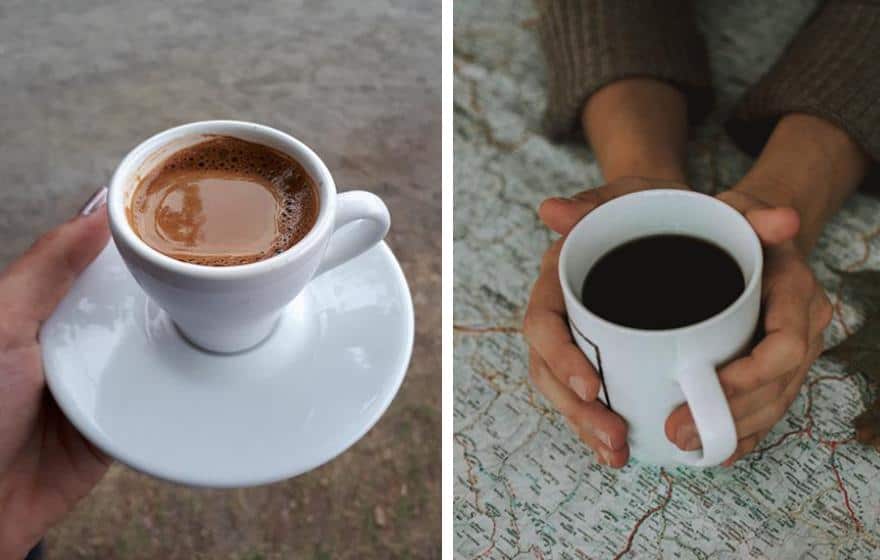Last Updated on December 13, 2023
Espresso and what we think of as “regular” coffee differ in the way they’re made. Each brew has a distinct preparation method that influences its flavors beyond the type of beans chosen.
The beans do make a difference, of course—often the difference between a good cup and a great one.
Coffee is a broad term that covers all drinks derived from the raw, dried seeds of the coffee plant. Regular coffee can be brewed using many different methods, including pour-over, siphon and immersion. All these methods require more brewing time than espresso.
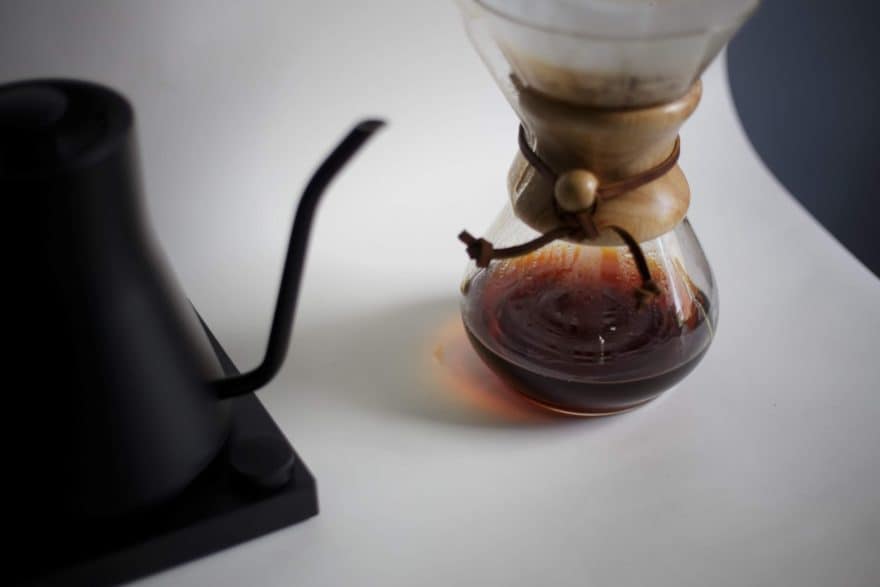
The espresso brewing method uses heat and pressure to brew quickly. The result is concentrated coffee, popular for its rich, complex, and intense taste. Espresso is the basic building block upon which an entire group of coffee drinks is based.
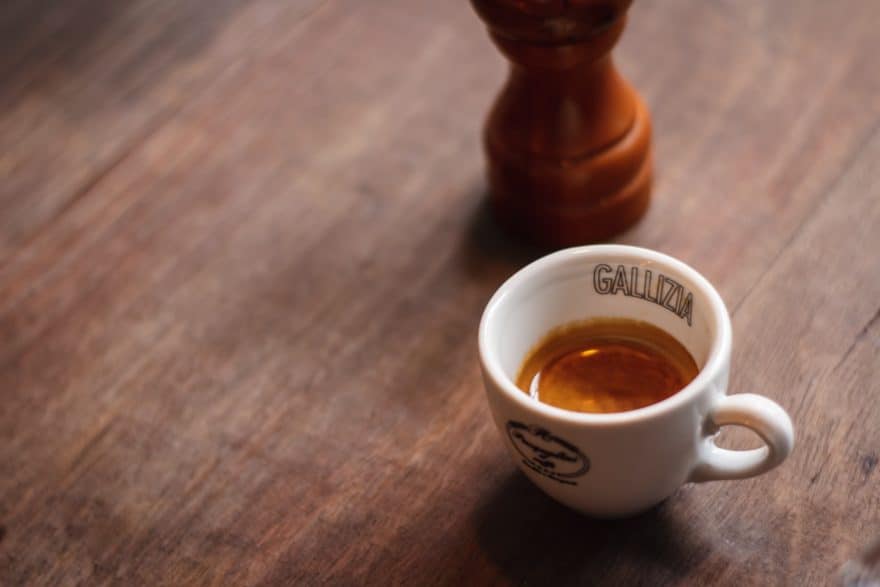
The difference between espresso and coffee
The primary difference between espresso and coffee is the density of solids dissolved in the water (which includes caffeine). Espresso is denser. The dissolved solids give espresso a heavier, more viscous body, stronger taste, and—when it’s made correctly—a layer of creamy foam on top.
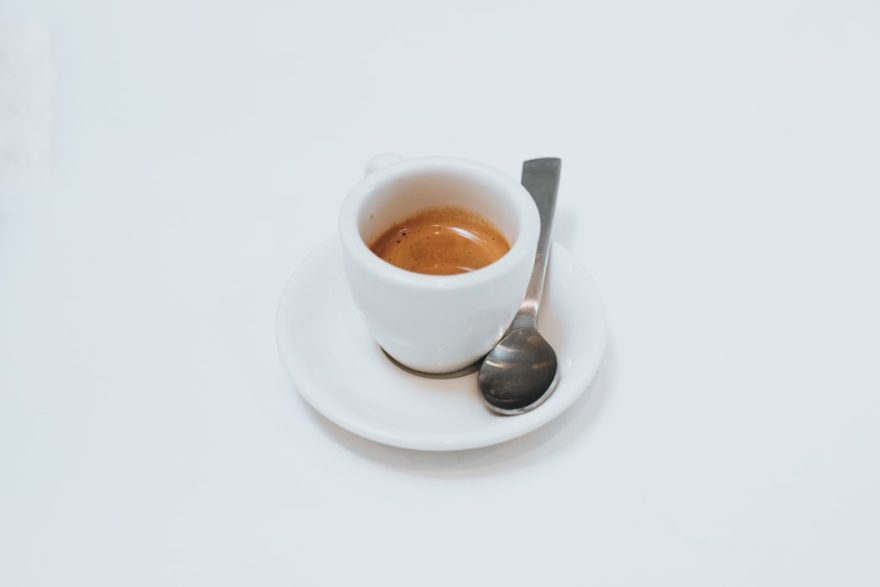
All this arises from the process of grinding, preparing, and brewing the coffee, which is unlike methods used for regular coffee. You need a specialized machine to make an espresso shot, but it doesn’t have to be a giant, complex coffee-shop machine. You can buy a decent espresso maker for your home kitchen at a reasonable price.
With training and practice, you can learn to pull your own espresso.
Espresso beans vs. coffee beans
Species of beans
The same beans are used to make espresso and coffee. In the U.S., this largely means Arabica beans, with Robusta beans generally used for lower quality coffees sold at lower prices. However, roasters have discovered that adding a small amount of Robusta to an Arabica roast can improve the desirable crema on top of an espresso.
How espresso beans are roasted
Beans intended for espresso are usually roasted longer and darker than most coffee beans. However, you can put an espresso roast in a regular drip coffee maker and make perfectly good coffe. You can also use a blonde roast in an espresso machine if you want. It’s the process of making an espresso shot that intensifies the taste of the beans. Many baristas now experiment with the potential of lighter roasts for espresso.
Espresso comes to us from Italy, where they have long had a preference for darkly roasted beans. That’s why we sometimes call a very dark roast an Italian roast or an espresso roast.
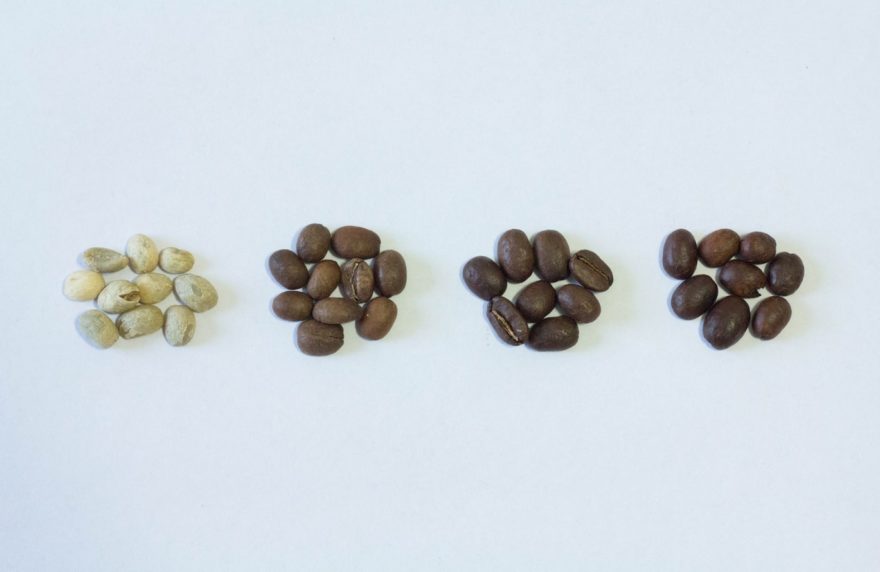
Back in the day when most available beans weren’t of great quality, the dark roast was developed to mask the taste of the original bean, covering it up with toasty flavors. The espresso roast brought out sweet, smoky, and caramel tastes, even if the beans were poor. Today, farmers grow much better beans and the dark roast is traditional rather than necessary.
An espresso roast is similar to a French roast. The beans are roasted until they release their oils and become shiny. Because the oils are now outside the bean instead of inside, the beans should be used promptly. Roasted beans age quickly, losing flavor and the ability to create that foamy crema.
How the beans are ground
Beans are ground much finer for espresso than they are for most other types of coffee. If ground coffee beans feel like gravel, espresso beans feel like sand. If you put a fine, espresso grind into a regular drip machine, you are likely to produce quite a bitter coffee, because the water is in contact with the grounds for long enough to pull out the most bitter flavors. The water can’t do this as easily with coarser grounds.
Brewing and preparation
Pulling an espresso
Preparation is the stage where the most significant differences between coffee and espresso emerge. To make espresso, you first pack the ground beans tightly into the portafilter. Then you run hot water through them at high pressure for 25 to 30 seconds, and you have a cup of espresso.
You’re using a much smaller ratio of water to coffee than you would for regular coffee, but you are still able to extract all the flavor thanks to the heat and pressure. The result is highly flavorful, concentrated coffee.
There’s a lot of science going on behind the scenes when you pull an espresso, but the act itself is a bit of an art.
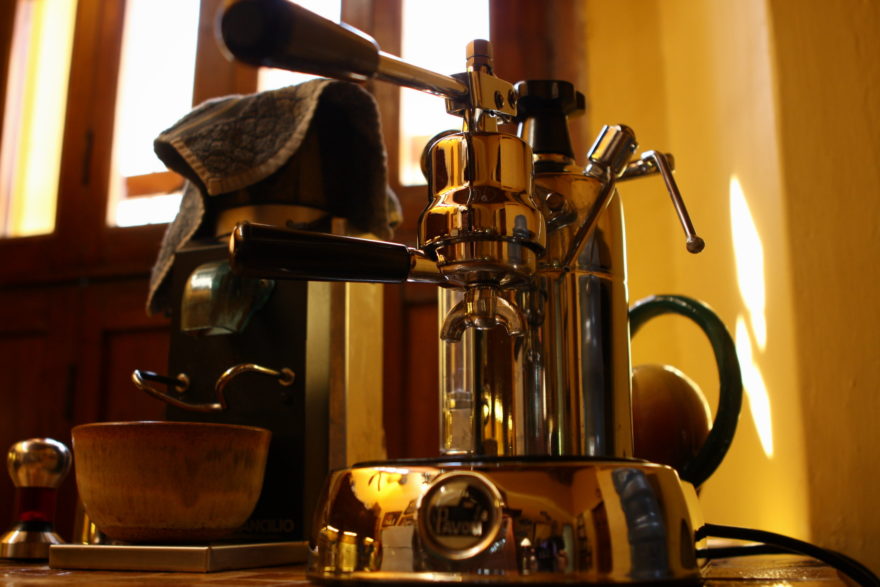
Espresso machines used to be fully steam-powered which could create a very bitter brew. Designers then developed machines that used a hand pump. Baristas would develop a feel for exactly how much pressure to put through the beans, and for how long. These days, most of this is automated. The barista’s art comes out in other stages of the process, such as frothing milk by hand. But it’s that pressurized pull that creates the layered taste espresso connoisseurs love.
Crema
Fresh beans with water forced through them at high pressure create a bubbly crema. The deep pressurization means the water holds a greater amount of carbon dioxide, which expands into bubbles upon depressurization. Some of the compounds in the coffee attach to the foam at this point.
If the beans are fresh, you will see a rich, dark foam on top of your cup. Older beans create a lighter colored foam or none at all. A good crema is a sign of a quality coffee shop.
The crema has a slightly bitter taste and some people prefer to skim it off.
Caffeine in espresso vs. coffee
Espresso has a stronger taste and more caffeine per ounce than regular coffee. But espresso typically comes in smaller servings that do not contain as much caffeine as a typical cup of coffee.
Note that coffee strength and caffeine are not necessarily the same thing.
Espresso usually contains about 62 mg of caffeine per shot. A 12-ounce cup of brewed coffee has almost twice this amount: 120 mg. So yes, espresso has a higher caffeine concentration than most other types of coffee, but you need to drink two of them to get the same caffeine rush as a cup of coffee.
The amount of caffeine in any type of coffee depends on a variety of factors. Full saturation of the ground coffee—as is done in espresso-making—helps pull all the caffeine out of the beans. Near boiling water temperature also extracts more caffeine, and that’s another hallmark of espresso.
How they taste
Espresso has low acidity and a bittersweet taste. Other methods of brewing coffee have unique flavors determined by the bean and the brew.
An unstirred espresso will have a gradient of taste and consistency. The foam on top has a bitter taste, and many drinkers skim it off. The top of the espresso starts brighter and thinner and the liquid grows more bittersweet and thicker toward the bottom of the cup. A quick stir blends these tastes into a balance preferred by many people.
In summary, espresso is just one of many kinds of coffee. It uses the same beans, which can be roasted the same way. However, espresso is ground finer and brewed using a specialized machine and a completely different brewing method. This brewing leads to the creation of concentrated coffee, a bubbly head, a more complex and intense taste, and more caffeine per ounce.

